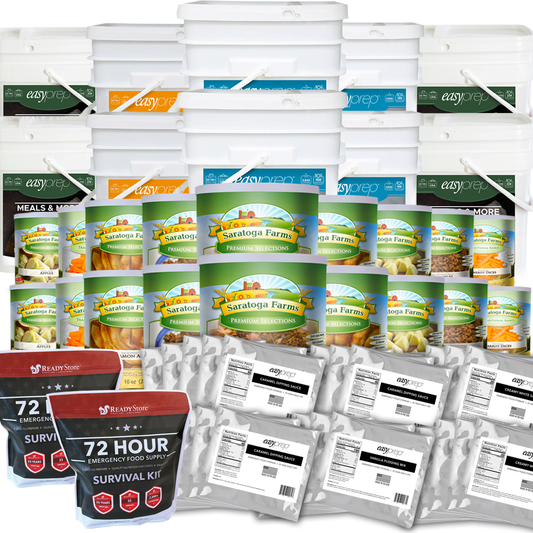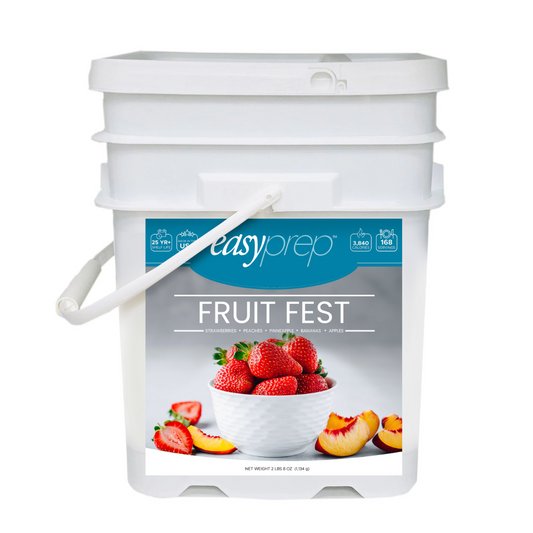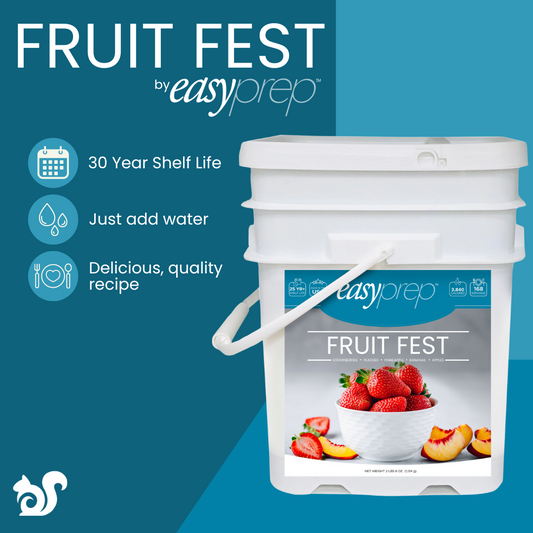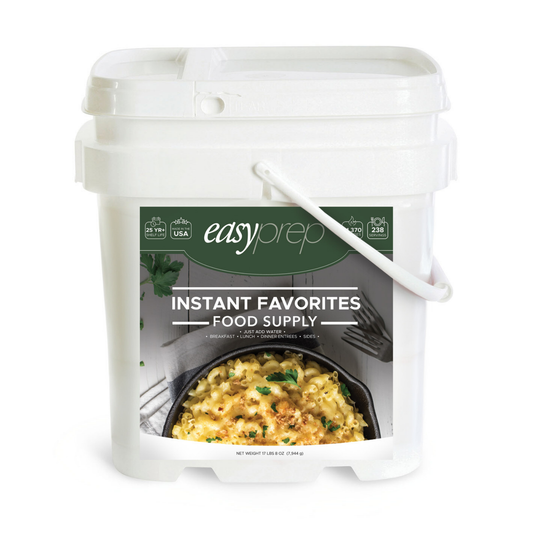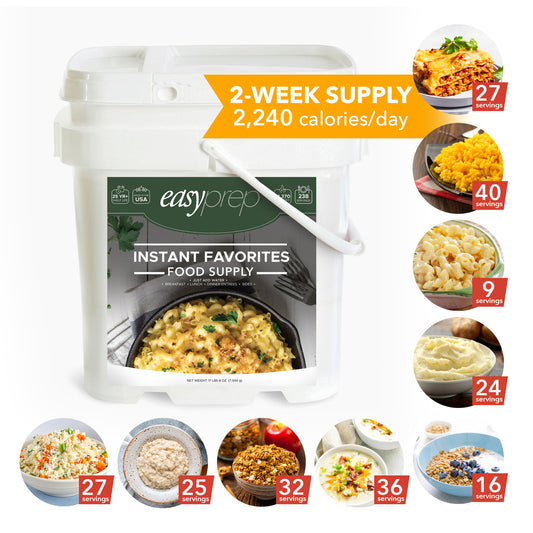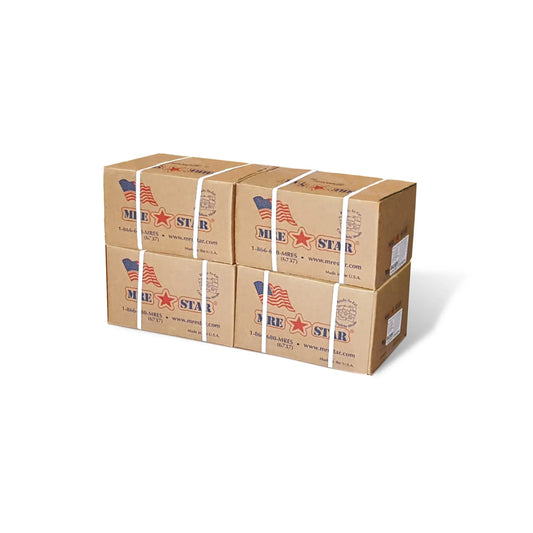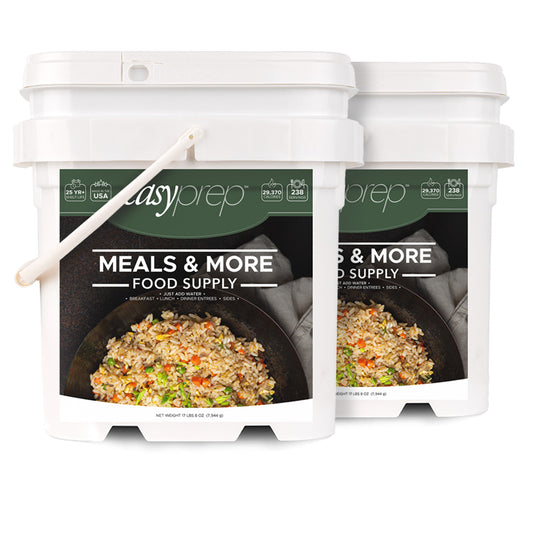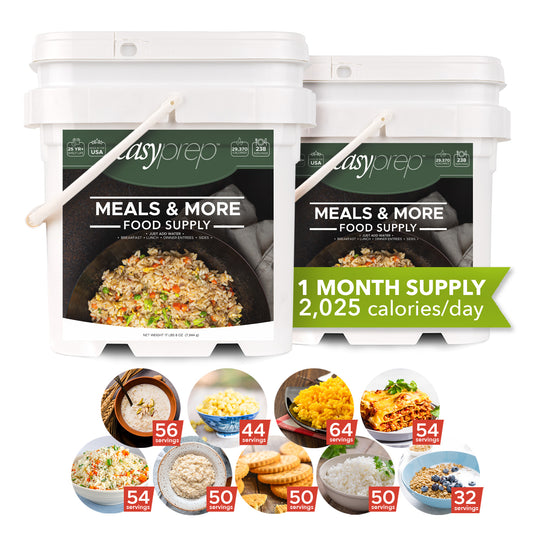Should You Raise Goats?
19 Oct 2013
Raising goats is a great way to save money and become more self-sufficient as a family. Goats are really easy to raise and can provide you with meat and milk.
Despite what you may have heard, goats aren’t smelly, messy or eat things like tin cans. Many people who own goats compare them to dogs - they play, don’t smell bad, and can be trained to follow you or play. Goats are very social animals and are very friendly to raise.
If you’ve ever considered raising a goat or two, here are some reasons that you should:
Why Keep Goats?
So what’s your reward for keeping goats? If you raise the dairy goats, each doe will give you about 90 quarts of delicious fresh milk every month for 10 months out of the year. You and our family might drink the milk or use it to make yogurt, cheese, or ice cream. Surplus milk may be fed to chickens, pigs, calves, or orphaned livestock and wildlife.
From each meat "Wether" (castrated buck), you will get 25 to 40 pounds of tasty, lean meat, which may be baked, fried, broiled, stewed, or barbecued. If you raise fiber goats, from each adult Angora you will get 5 to 7 pounds of mohair twice a year. From each Cashmere goat, you will get less than 1 pound of down per year.
Each doe you breed will produce one kid or more annually; some does kid twins year after year. Every day, each goat will drop a little more than 1 pound of manure, which makes for good fertilizer for the garden.
Buying Goats
There are over 200 different breeds of goats that all have different strengths. Some are great for milking, some for meat, some are very space-efficient and others are great for hauling. You can determine what you want to use your goats for and purchase the best goat for your needs.
 Dairy Goats
In the United States, there are a few different breeds of goats that are good for milking: Alpine, LaMancha, Nubian, Oberhasli, Saanen and Toggernburg.
Alpines, Oberhaslis, Saanens and Toggenburgs typically do better in cooler climates. LaManchas and Nubians originate from warmer tropical and desert climates and do better in warmer climates.
You won’t be able to tell how productive a doeling (young female goat) will be when she matures. But you might be able to get a good idea of how much milk she’ll produce by looking at her dam’s milk production.
An average doe yields about 900 quarts of milk each year. A good milking goat will have a soft, wide, round udder; teats that are the same size and won’t drag on the ground, a well-rounded rib cage, a strong jaw, strong legs and soft skin with a smooth coat.
Dairy Goats
In the United States, there are a few different breeds of goats that are good for milking: Alpine, LaMancha, Nubian, Oberhasli, Saanen and Toggernburg.
Alpines, Oberhaslis, Saanens and Toggenburgs typically do better in cooler climates. LaManchas and Nubians originate from warmer tropical and desert climates and do better in warmer climates.
You won’t be able to tell how productive a doeling (young female goat) will be when she matures. But you might be able to get a good idea of how much milk she’ll produce by looking at her dam’s milk production.
An average doe yields about 900 quarts of milk each year. A good milking goat will have a soft, wide, round udder; teats that are the same size and won’t drag on the ground, a well-rounded rib cage, a strong jaw, strong legs and soft skin with a smooth coat.
 Meat Goats
Throughout the world, keeping goats for meat is a more common practice than milking. Only a few bucks are needed for breeding. In the United States, there are two types of goats that are kept primarily for meat: Boer and Spanish breeds.
The most popular goat breed for meat is the Boer. They originate from South Africa and have a white coat. A mature doe weighs 150 to 225 pounds. A mature buck weighs 175 to 325 pounds.
Spanish goats were the most popular goats before Boers came along. They got their name from Spanish explorers who left them to breed and provide meat for future expeditions. Because the goats vary in shape and color, the term Spanish doesn’t refer to a specific breed. However, a mature doe will weigh 80 to 100 pounds while bucks weigh 150 to 175 pounds.
Meat Goats
Throughout the world, keeping goats for meat is a more common practice than milking. Only a few bucks are needed for breeding. In the United States, there are two types of goats that are kept primarily for meat: Boer and Spanish breeds.
The most popular goat breed for meat is the Boer. They originate from South Africa and have a white coat. A mature doe weighs 150 to 225 pounds. A mature buck weighs 175 to 325 pounds.
Spanish goats were the most popular goats before Boers came along. They got their name from Spanish explorers who left them to breed and provide meat for future expeditions. Because the goats vary in shape and color, the term Spanish doesn’t refer to a specific breed. However, a mature doe will weigh 80 to 100 pounds while bucks weigh 150 to 175 pounds.
 Miniature Goats
Miniature goats, true to their name, are smaller than full-sized goats and produce less milk and meat. However, this also means they eat less, require smaller housing and are better for colder climates when they can spend more times indoors. There are two breeds of miniature goats: African Pygmy and Nigerian Dwarf.
The Pygmy has a muscular build and is great for meat. A mature doe weights 35 to 60 pounds. A mature buck weighs 45 to 70 pounds. The Nigerian Dwarf is better for milking and produces about 300 quarts of milk a year - about ⅓ the amount you’d get from a regular-size goat.
How Many Goats? How Much Space Do I Need?
One of the biggest mistakes of new goat raisers is getting too many goats for the space they have. Are you going to want your goats to roam? If so, you’ll need about 20-square feet per adult for feeding and sleeping; plus another 30-square feet per adult for roaming and proper exercise.
Miniature Goats
Miniature goats, true to their name, are smaller than full-sized goats and produce less milk and meat. However, this also means they eat less, require smaller housing and are better for colder climates when they can spend more times indoors. There are two breeds of miniature goats: African Pygmy and Nigerian Dwarf.
The Pygmy has a muscular build and is great for meat. A mature doe weights 35 to 60 pounds. A mature buck weighs 45 to 70 pounds. The Nigerian Dwarf is better for milking and produces about 300 quarts of milk a year - about ⅓ the amount you’d get from a regular-size goat.
How Many Goats? How Much Space Do I Need?
One of the biggest mistakes of new goat raisers is getting too many goats for the space they have. Are you going to want your goats to roam? If so, you’ll need about 20-square feet per adult for feeding and sleeping; plus another 30-square feet per adult for roaming and proper exercise.
 You’ll also have to determine whether you want to breed your goats. You’ll need to seriously consider whether or not you should even purchase a buck and what implications that would have on the size of your herd.
If you’re planning on breeding, you’ll also need a pen for the kids. A standard pen size is about 4 foot by 5 foot. If you’re breeding multiple does, you’ll have to clean out and sanitize the pen between breedings.
Preparing Your Property
There are few things you’ll want to consider for your property before you start raising goats.
You’ll want to build some type of shelter or housing for the goats. Sometimes this can be as easy as a shed or a pre-existing shelter. However, you may want to dedicate more space to milking or feeding areas. You’ll want to make sure your shelter is dry and draft-free. You can cover the floor with wood shavings (not cedar), straw, or hay.
Goats are very smart and curious, which means they will try and get out of their pen and explore the neighborhood as much as possible. You’ll want to make a fence that is very sturdy and will hold your goats in and keep predators out.
You’ll also want to make sure you have food storage containers, bowls, hay mangers, mineral feeders and water buckets.
Feeding Goats
Goats can be put to pasture on a grassy or wooded area. They will typically eat shrubs, grass and young trees. It’s important to rotate pastures to keep your grass growing and your goats properly fed.
Even if you do put your goats to pasture, it’s important to add hay to their diet. You can feed hay free choice - give the goats as much as they desire. Young goats or pregnant and milk-producing does may require an extra goat “concentrate,” or goat chow.
What Advice Do You Have?
Have you raised goats or looked into it? How did it go? What advice do you have for others who are just starting on their journey?
You’ll also have to determine whether you want to breed your goats. You’ll need to seriously consider whether or not you should even purchase a buck and what implications that would have on the size of your herd.
If you’re planning on breeding, you’ll also need a pen for the kids. A standard pen size is about 4 foot by 5 foot. If you’re breeding multiple does, you’ll have to clean out and sanitize the pen between breedings.
Preparing Your Property
There are few things you’ll want to consider for your property before you start raising goats.
You’ll want to build some type of shelter or housing for the goats. Sometimes this can be as easy as a shed or a pre-existing shelter. However, you may want to dedicate more space to milking or feeding areas. You’ll want to make sure your shelter is dry and draft-free. You can cover the floor with wood shavings (not cedar), straw, or hay.
Goats are very smart and curious, which means they will try and get out of their pen and explore the neighborhood as much as possible. You’ll want to make a fence that is very sturdy and will hold your goats in and keep predators out.
You’ll also want to make sure you have food storage containers, bowls, hay mangers, mineral feeders and water buckets.
Feeding Goats
Goats can be put to pasture on a grassy or wooded area. They will typically eat shrubs, grass and young trees. It’s important to rotate pastures to keep your grass growing and your goats properly fed.
Even if you do put your goats to pasture, it’s important to add hay to their diet. You can feed hay free choice - give the goats as much as they desire. Young goats or pregnant and milk-producing does may require an extra goat “concentrate,” or goat chow.
What Advice Do You Have?
Have you raised goats or looked into it? How did it go? What advice do you have for others who are just starting on their journey?
 Dairy Goats
In the United States, there are a few different breeds of goats that are good for milking: Alpine, LaMancha, Nubian, Oberhasli, Saanen and Toggernburg.
Alpines, Oberhaslis, Saanens and Toggenburgs typically do better in cooler climates. LaManchas and Nubians originate from warmer tropical and desert climates and do better in warmer climates.
You won’t be able to tell how productive a doeling (young female goat) will be when she matures. But you might be able to get a good idea of how much milk she’ll produce by looking at her dam’s milk production.
An average doe yields about 900 quarts of milk each year. A good milking goat will have a soft, wide, round udder; teats that are the same size and won’t drag on the ground, a well-rounded rib cage, a strong jaw, strong legs and soft skin with a smooth coat.
Dairy Goats
In the United States, there are a few different breeds of goats that are good for milking: Alpine, LaMancha, Nubian, Oberhasli, Saanen and Toggernburg.
Alpines, Oberhaslis, Saanens and Toggenburgs typically do better in cooler climates. LaManchas and Nubians originate from warmer tropical and desert climates and do better in warmer climates.
You won’t be able to tell how productive a doeling (young female goat) will be when she matures. But you might be able to get a good idea of how much milk she’ll produce by looking at her dam’s milk production.
An average doe yields about 900 quarts of milk each year. A good milking goat will have a soft, wide, round udder; teats that are the same size and won’t drag on the ground, a well-rounded rib cage, a strong jaw, strong legs and soft skin with a smooth coat.
 Meat Goats
Throughout the world, keeping goats for meat is a more common practice than milking. Only a few bucks are needed for breeding. In the United States, there are two types of goats that are kept primarily for meat: Boer and Spanish breeds.
The most popular goat breed for meat is the Boer. They originate from South Africa and have a white coat. A mature doe weighs 150 to 225 pounds. A mature buck weighs 175 to 325 pounds.
Spanish goats were the most popular goats before Boers came along. They got their name from Spanish explorers who left them to breed and provide meat for future expeditions. Because the goats vary in shape and color, the term Spanish doesn’t refer to a specific breed. However, a mature doe will weigh 80 to 100 pounds while bucks weigh 150 to 175 pounds.
Meat Goats
Throughout the world, keeping goats for meat is a more common practice than milking. Only a few bucks are needed for breeding. In the United States, there are two types of goats that are kept primarily for meat: Boer and Spanish breeds.
The most popular goat breed for meat is the Boer. They originate from South Africa and have a white coat. A mature doe weighs 150 to 225 pounds. A mature buck weighs 175 to 325 pounds.
Spanish goats were the most popular goats before Boers came along. They got their name from Spanish explorers who left them to breed and provide meat for future expeditions. Because the goats vary in shape and color, the term Spanish doesn’t refer to a specific breed. However, a mature doe will weigh 80 to 100 pounds while bucks weigh 150 to 175 pounds.
 Miniature Goats
Miniature goats, true to their name, are smaller than full-sized goats and produce less milk and meat. However, this also means they eat less, require smaller housing and are better for colder climates when they can spend more times indoors. There are two breeds of miniature goats: African Pygmy and Nigerian Dwarf.
The Pygmy has a muscular build and is great for meat. A mature doe weights 35 to 60 pounds. A mature buck weighs 45 to 70 pounds. The Nigerian Dwarf is better for milking and produces about 300 quarts of milk a year - about ⅓ the amount you’d get from a regular-size goat.
How Many Goats? How Much Space Do I Need?
One of the biggest mistakes of new goat raisers is getting too many goats for the space they have. Are you going to want your goats to roam? If so, you’ll need about 20-square feet per adult for feeding and sleeping; plus another 30-square feet per adult for roaming and proper exercise.
Miniature Goats
Miniature goats, true to their name, are smaller than full-sized goats and produce less milk and meat. However, this also means they eat less, require smaller housing and are better for colder climates when they can spend more times indoors. There are two breeds of miniature goats: African Pygmy and Nigerian Dwarf.
The Pygmy has a muscular build and is great for meat. A mature doe weights 35 to 60 pounds. A mature buck weighs 45 to 70 pounds. The Nigerian Dwarf is better for milking and produces about 300 quarts of milk a year - about ⅓ the amount you’d get from a regular-size goat.
How Many Goats? How Much Space Do I Need?
One of the biggest mistakes of new goat raisers is getting too many goats for the space they have. Are you going to want your goats to roam? If so, you’ll need about 20-square feet per adult for feeding and sleeping; plus another 30-square feet per adult for roaming and proper exercise.
 You’ll also have to determine whether you want to breed your goats. You’ll need to seriously consider whether or not you should even purchase a buck and what implications that would have on the size of your herd.
If you’re planning on breeding, you’ll also need a pen for the kids. A standard pen size is about 4 foot by 5 foot. If you’re breeding multiple does, you’ll have to clean out and sanitize the pen between breedings.
Preparing Your Property
There are few things you’ll want to consider for your property before you start raising goats.
You’ll want to build some type of shelter or housing for the goats. Sometimes this can be as easy as a shed or a pre-existing shelter. However, you may want to dedicate more space to milking or feeding areas. You’ll want to make sure your shelter is dry and draft-free. You can cover the floor with wood shavings (not cedar), straw, or hay.
Goats are very smart and curious, which means they will try and get out of their pen and explore the neighborhood as much as possible. You’ll want to make a fence that is very sturdy and will hold your goats in and keep predators out.
You’ll also want to make sure you have food storage containers, bowls, hay mangers, mineral feeders and water buckets.
Feeding Goats
Goats can be put to pasture on a grassy or wooded area. They will typically eat shrubs, grass and young trees. It’s important to rotate pastures to keep your grass growing and your goats properly fed.
Even if you do put your goats to pasture, it’s important to add hay to their diet. You can feed hay free choice - give the goats as much as they desire. Young goats or pregnant and milk-producing does may require an extra goat “concentrate,” or goat chow.
What Advice Do You Have?
Have you raised goats or looked into it? How did it go? What advice do you have for others who are just starting on their journey?
You’ll also have to determine whether you want to breed your goats. You’ll need to seriously consider whether or not you should even purchase a buck and what implications that would have on the size of your herd.
If you’re planning on breeding, you’ll also need a pen for the kids. A standard pen size is about 4 foot by 5 foot. If you’re breeding multiple does, you’ll have to clean out and sanitize the pen between breedings.
Preparing Your Property
There are few things you’ll want to consider for your property before you start raising goats.
You’ll want to build some type of shelter or housing for the goats. Sometimes this can be as easy as a shed or a pre-existing shelter. However, you may want to dedicate more space to milking or feeding areas. You’ll want to make sure your shelter is dry and draft-free. You can cover the floor with wood shavings (not cedar), straw, or hay.
Goats are very smart and curious, which means they will try and get out of their pen and explore the neighborhood as much as possible. You’ll want to make a fence that is very sturdy and will hold your goats in and keep predators out.
You’ll also want to make sure you have food storage containers, bowls, hay mangers, mineral feeders and water buckets.
Feeding Goats
Goats can be put to pasture on a grassy or wooded area. They will typically eat shrubs, grass and young trees. It’s important to rotate pastures to keep your grass growing and your goats properly fed.
Even if you do put your goats to pasture, it’s important to add hay to their diet. You can feed hay free choice - give the goats as much as they desire. Young goats or pregnant and milk-producing does may require an extra goat “concentrate,” or goat chow.
What Advice Do You Have?
Have you raised goats or looked into it? How did it go? What advice do you have for others who are just starting on their journey?


